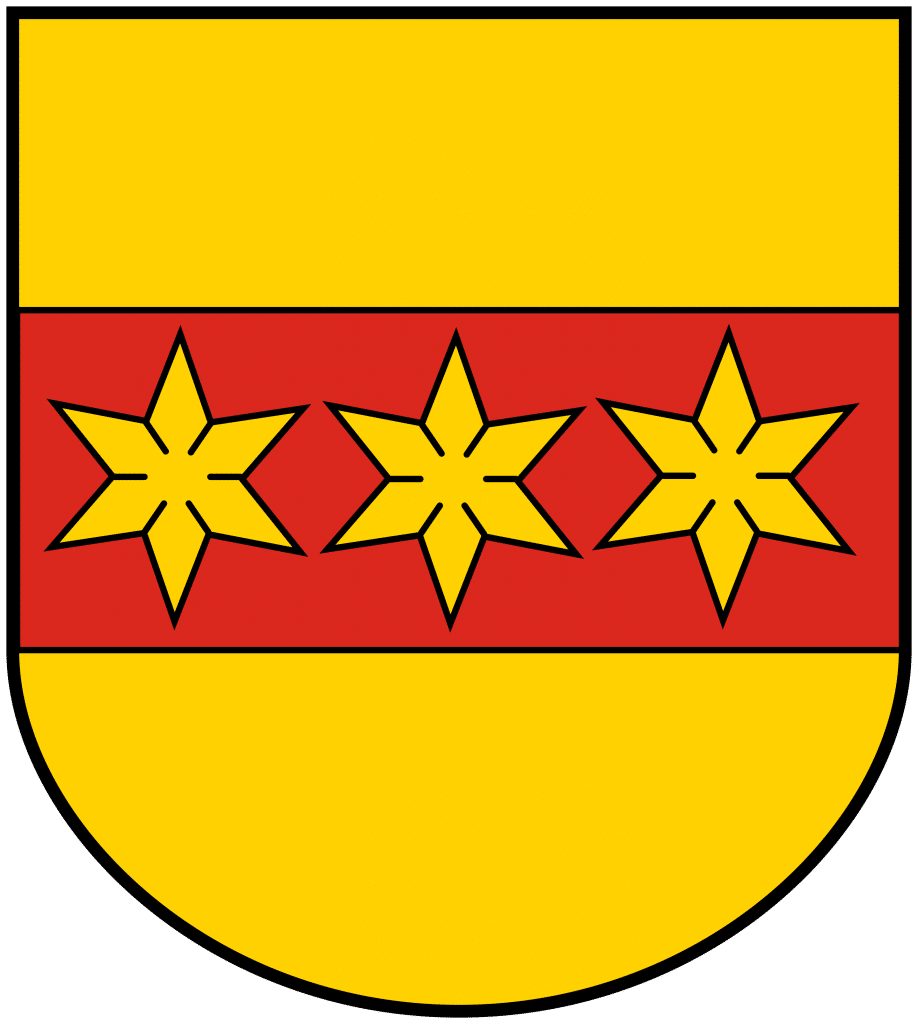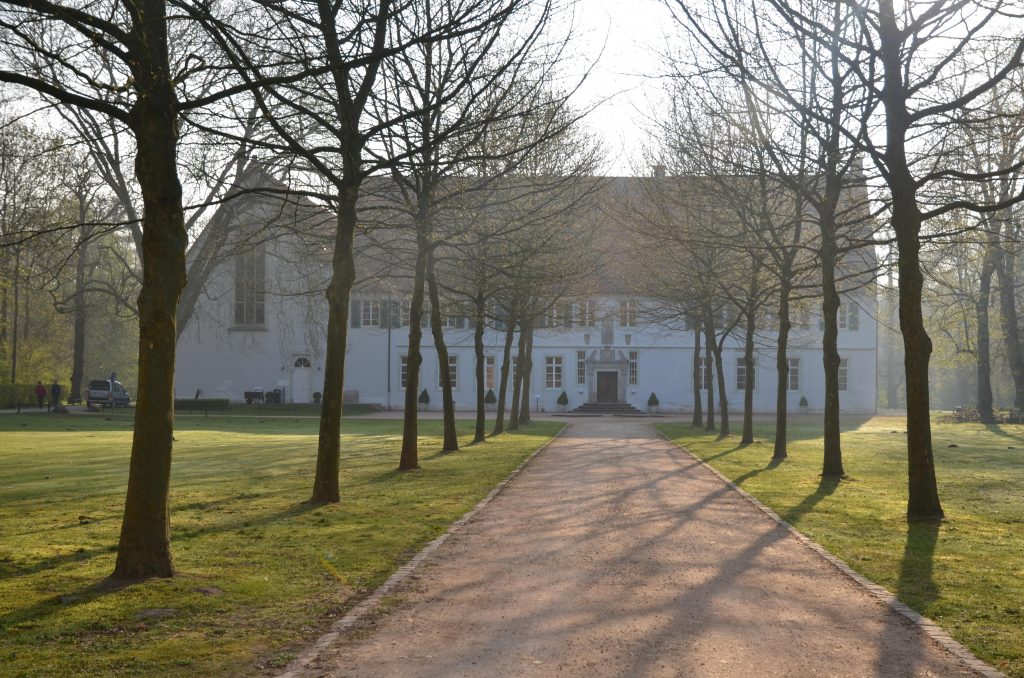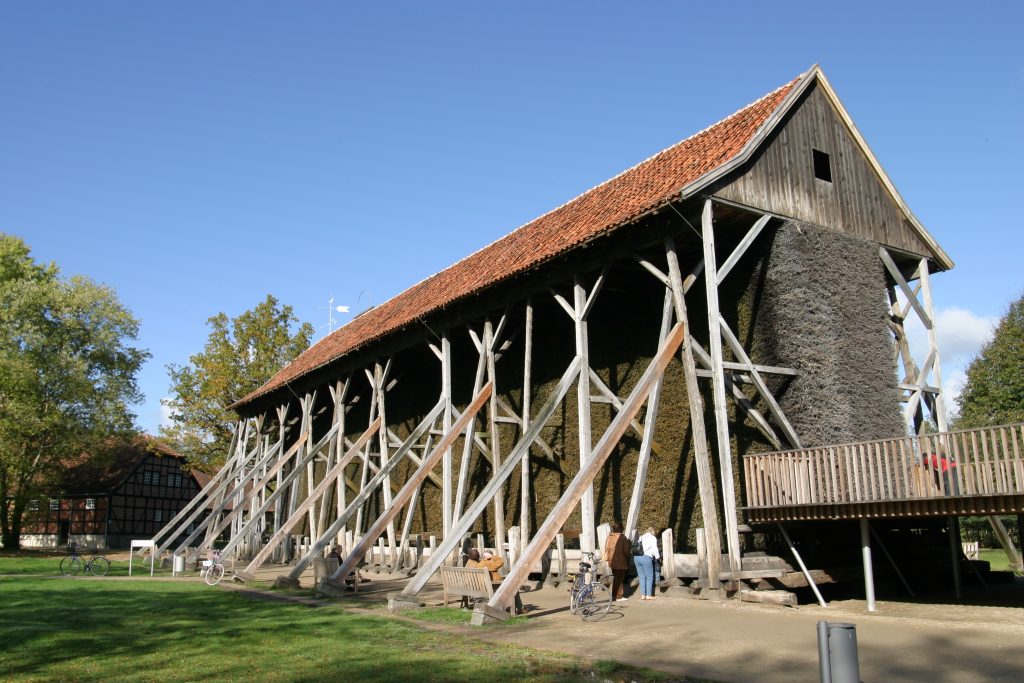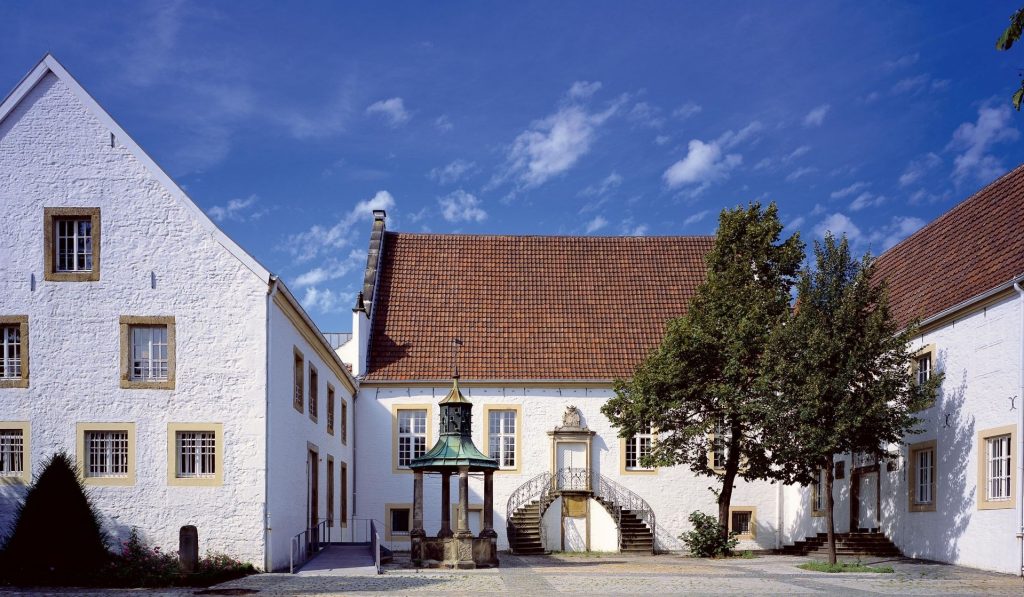
State:
Germany
Federal state:
North Rhine-Westphalia
Coordinates:
52° 17′ N, 7° 26′ O
Altitude:
35 m above sea level
Area (town):
145 km²
Inhabitants (town):
80.597 (2021)
Population density:
525 inhabitants/km²
Rheine
Geography
Rheine is a Westphalian large district town on the Ems and, with around 80,000 inhabitants, the second largest town in Münsterland after Münster. Its geographical position: 52 degrees 17 minutes north latitude, 7 degrees 26 minutes east longitude. The highest point is 90 metres above sea level, the lowest 27 metres above sea level. The city area is 145.08 km². Due to its exceptionally good geographical location and excellent transport links, Rheine has a high quality as a business location. With a large number of central authorities, institutions and schools as well as a lively inner city with a wide range of retail outlets and various cultural facilities, Rheine performs an important supply function for the surrounding municipalities. Rheine also convinces with a high level of healthy quality of life. Here you can find urban life in a scenic environment.
History
The origin, the granting of town rights and the town coat of arms (838 – 1327)
Rheine owes its birth to a limestone mound that caught the eye of Frankish warriors around 1,200 years ago, splendidly suited to build a base on in order to secure the important ford in the Ems. Where the Falkenhof stands today, there was once “Curtis Reni”. The first historical record is in the deed of donation of 7 June 838, with which Emperor Louis the Pious bequeathed the “Reni” estate, situated on the above-mentioned limestone hill, to the Benedictine nuns of Herford Abbey. On 15 August 1327, Prince-Bishop Ludwig II, Bishop of Münster and Landgrave of Hesse, granted the small settlement between the market, the Münster wall and the Ems the town charter. The town’s coat of arms is a sign that has survived to this day and refers to this right, which was so important for Rheine: A red bar set with three golden stars in a golden field.
The town of Rene (1327 – 1622)
Bishop Ludwig II of Münster’s activities in founding towns (Dülmen, Ramsdorf, Rheine, Billerbeck, Werne) consolidate the rule in his territory. The town of Rheine develops from a small market town into an independent town with all the facilities that go with it. The population grows and the building of the magnificent parish church in the 15th century bears witness to the economic growth.
From the loss of urban self-government to the end of the Prince-Bishopric of Münster (1623 – 1802)
In 1622/23, the city refuses to allow further imperial troops to quarter there and is invaded by its own sovereign and punished by having its municipal privileges revoked. Elector Ferdinand enforces re-Catholicisation. Shortly before the end of the Thirty Years’ War, Rheine is set on fire by Swedish and Hessian troops in September 1647. In the Seven Years’ War Rheine is again affected by quartering and war contributions. The economy and population suffer setbacks. Despite the stagnation, progress can also be seen in individual areas in the 17th and 18th centuries.
French period and Prussian invasion (1803 – 1814)
Rheine loses its sovereign with the Prince-Bishop of Münster and experiences the French period as well as the invasion of Russian and Prussian troops after the victory over Napoleon. Rheine becomes the residence of the duke and the capital of the small principality of Rheina-Wolbeck. The French period begins and Rheine belongs to the Grand Duchy of Berg until it is finally annexed to the French Empire in 1811. The end of the French period is first heralded by the invasion of Rheine by Russian Cossack troops. Later Prussia takes possession of the principality of Münster with a provisional government commission. Rheine experiences the first emergence of Prussian-style German nationalism.
The first decades under Prussian rule (1815 – 1870)
Prussia is rewarded with territorial gains: among other things, the whole of Westphalia becomes a Prussian province. The focus is on the transition from the artisanal to the industrial mode of production. In 1844, the first steam engine was built and the development of the city across the Ems is initiated. Alongside the textile industry, the railway marks the second major development spurt. In 1856, traffic began in three directions. Prussian rule shows itself to be more tolerant in religious matters; a striking expression of this development is the founding of a Protestant parish in 1838.
Rheine during the Empire (1871 – 1918)
A political change is the establishment of the Reichstag, which is elected according to the rules of majority suffrage. Majority voting favours the development of political parties in Rheine as well. The candidates of the Centre Party receive a majority in all elections in the Empire. In 1866 the Kingdom of Hanover is annexed by Prussia; for Rheine this means the loss of its unfavourable border location and an improvement in transport links to the west, north and east. At the beginning of the First World War, many families in Rheine are affected by the conscription of their men and these effects become more apparent in the everyday life of the town, followed by a sharp rise in food prices in 1917.
The Years of the Weimar Republic (1918 – 1932)
After the end of the Empire, the Weimar Republic is able to establish itself in the first half of 1919. At the local level, despite new political groupings, the Centre Party retains an absolute majority of votes in the council until 1933. Typical of this short period of these “Golden Twenties” is the splendid way in which the town of Rheine and the associations rooted in it celebrate the 600th anniversary of the granting of town rights. In the wake of the world economic crisis, quite a few of the textile companies based here are thrown into turmoil.
Rheine during the years of nationalist rule (1933 -1945)
The Nationalists’ takeover of power also takes place at the municipal level, which also applies to Rheine, where the previously dominant Centre Party has already lost all influence by mid-1933. In Rheine’s townscape the silo at the Emsmühle is built and after the reintroduction of compulsory military service in 1935 military buildings are erected on the Dorenkamp, on the Waldhügel and in Bentlage. In April 1933 the SA organises a boycott of Jewish shops in Rheine as elsewhere in the Reich, in November 1938 the synagogue is set on fire and from the end of 1941 the transports to the extermination camps, mainly to Riga in Latvia, begin. The city’s importance as a garrison, a railway junction and an industrial location means that Rheine is increasingly exposed to air raids by the Allies, suffers many deaths and injuries and suffers severe destruction.
Post-War Period and Economic Miracle (1945 – 1974)
In the 1950s Rheine experienced the “economic miracle”. After the privations of the war and post-war period, there seems to be hardly any limits to economic growth and the resulting improvements in income. The textile industry, which still dominates in Rheine, experiences a final heyday. The polarisation of world politics between the USA and the USSR now also leads to the Federal Republic of Germany establishing the Bundeswehr in 1955 and introducing compulsory military service one year later. This has far-reaching consequences for Rheine: the town becomes the second largest Bundeswehr base in North Rhine-Westphalia.
Rheine after the municipal reorganisation (1975 – 2002)
The municipal reorganisation, which comes into effect on 1 January 1975, formally represents a merger of five previously independent municipalities to form the larger city of Rheine. With a Red-Green majority in 1994, the district committees are abolished; they are replaced by citizens’ forums in all districts. The collapse of the communist state system and the change in the overall world political situation lead to the Bundeswehr reducing its overall strength and disbanding individual units; in addition, the city’s population increases. Rheine gains new contours along the Kardinal-Galen-Ring. The Metropol Theatre has been demolished and from the Yellow Villa to the former goods dispatch and the cinema-centre / Möbel Berning complex, new buildings are being erected that will shape the cityscape.
Rheine today (as of 2002)
Today, the city is an efficient business location with a healthy mix of industries. Every year on 07 June, the birthday of the city of Rheine is celebrated with a ceremony. Each year, the focus of the event is directed towards a specific theme.
Politics
The City Council is the representative body of the citizens. In the current election period it consists of 48 members. 23 council seats are held by the CDU, 9 by the SPD, 7 by BÜNDNIS 90/DIE GRÜNEN, 3 by the FDP, 2 by the UWG Rheine, 2 by DIE LINKE and 2 by the BFR. The mayor of Rheine, Dr Peter Lüttmann, is chairman of the council with voting rights, but not a council member. In order to take into account the interests of special population groups, the city council has set up the Advisory Council for People with Disabilities, the Senior Citizens’ Advisory Council and the Family Advisory Council. To improve the integration of immigrants, the members of the municipal integration council were also elected on 13 September 2020.
1873–1905: Rudolph Sprickmann Kerkerinck
1905–1939: Hubert Schüttemeyer (Centre, from 1933 NSDAP)
1939–1944: Clemens Blanke (NSDAP)
1946–1946: Josef Backhaus
1946–1948: Georg Pelster (CDU)
1948–1954: Albert Biermann (CDU)
1954–1960: Balduin Echelmeyer (CDU)
1960–1961: Franz Rudolf Kümpers (CDU)
1961–1975: Albert Biermann (CDU)
1975–1994: Ludger Meier (CDU)
1994–1999: Günter Thum (SPD)
1999–2004: Wilhelm Niemann (CDU)
2004–2015: Angelika Kordfelder (SPD)
seit 2015: Peter Lüttmann (non-party)

The colours and metal were originally gold-red-silver, then changed to the colour and metals silver-red-gold in the 17th century and finally to the colour and metal gold-red-gold in 1954.
Culture and tourism
Within the city’s overall cultural offerings, the cultural work of associations and the independent scene represents an important space for artistic experimentation and development. In addition to the established cultural institutions, this non-institutionally anchored cultural scene is a vital source of artistic production that reflects the cultural commitment and artistic potential in the city and promotes the cultural education of the younger generation. Within the framework of the city’s overall cultural offer, it is therefore seen as necessary to provide project funding for independent cultural work in Rheine. This was underlined by the decision of the cultural policy guidelines of 17 April 2007. Rheine is also a major tourist destination. A quiet and secluded destination can be provided by the nature reserves, beautiful walking and hiking trails – a great experience. Or do you want to experience the hustle and bustle of the city? Here, many sights can be discovered in the city centre and you can experience the city’s history up close in a city walk. The Bentlage recreation area with lots of culture, leisure and history or also the Ems as the shortest river in Germany, characterises the city of Rheine as a waterway (Dortmund-Ems Canal) and recreation area.
NaturZoo Rheine

The NaturZoo Rheine in the Bentlage recreation area presents more than 1,000 animals from over 100 species in a predominantly natural environment. The most popular recreational facility in the Steinfurt district has up to 350,000 visitors a year. The visitors come from all over North Rhine-Westphalia, Lower Saxony and the Netherlands.
At the NaturZoo, visitors experience the animals up close. And not only in the petting zoo, which is particularly popular with children. In Germany’s first monkey forest they encounter (almost) free-living Barbary macaques. Penguins cross their path in the seabird aviary, herons and ibises fly over the heads of the public in the wetland aviary, and over 100 white storks even live completely free. Where direct contact is not possible, visitors can meet the animals at eye level: the seals can be seen diving under water and the gibbons can be admired as they shimmy in the treetops from a high stand. Eye to eye with tigers and sloth bears: Spectacular views into the naturally designed enclosures make it possible.
Bentlage Monastery
In the midst of a landscape conservation area, the former Bentlage Monastery of the Knights of the Cross is located on the Ems. Founded in 1437, the monastery was converted into a noble residence in 1803 and is now owned by the city of Rheine. Now, after careful restoration, the listed building is a cultural centre, a museum, a refuge in the countryside and a popular destination for guests from near and far. The Museum Kloster Bentlage in the east wing houses two fascinating collections under one roof. On the ground floor, art treasures and documents from the monastery’s history are presented, some of which have been on this site for over 500 years. Highlights of the collection are the magnificent late medieval “Reliquary Gardens”, former altars from the monastery church, which are now unique in the German-speaking world.

The Westphalian Gallery
On the upper floor, modern art meets historic monastery walls. From the holdings of the LWL Museum of Art and Culture, Westphalia’s contribution to modernism is documented here: from open-air painting to expressionism, from new objectivity to abstraction. Paintings by the best-known Westphalian Expressionist August Macke are on display, as are works by Otto Modersohn, Christian Rohlfs, Wilhelm Morgner and many more.
Saline Gottesgabe
Salt production in Bentlage can boast a history of almost a thousand years. It is mentioned in a document as early as 1022, when the noble woman Reinmod donated a chapel. After the Knights of the Cross took over the chapel in 1437 and built their monastery in its place, they started salt production. It was not until after 1601 that the salt works experienced its first heyday under the noble lords of Velen. In view of the hoped-for yields, they gave it the name “God’s gift”, which it has retained throughout the centuries.

After the devastating destruction of the Thirty Years’ War, essential modernisation took place from 1738 under the Salinen-Sozietät founded by Prince-Bishop Clemens August von Münster, under the direction of the internationally renowned saline specialist Baron Joachim Friedrich von Beust. He worked closely with the princely master builder Konrad Schlaun. The saline canal was built to generate energy, whereby the water power of the Ems was led to the saltworks, where it drove an oversized water wheel. In the newly constructed graduation works, the salt content of the brine, which was only at a low percentage, could be improved, while salt was boiled again in the salt boiling house, which was also newly built in 1745. Some of the salt produced was transported via the Max Clemens Canal to the Münster salt magazine, from where it was further traded.
After the abolition of the state monopoly in 1867, the Bentlager Saltworks found themselves increasingly exposed to competition from industrially produced and thus much cheaper salt, so they tried to find another economic mainstay by opening a bathing and spa business with the valuable brine. In 1890, the first baths were given in the new bathhouse (today’s “Gottesgabe” inn). Ten years later, the operation was expanded by a spa house, and after another 10 years, a children’s home was added in the immediate vicinity.
Unfortunately, the extraction of the precious and valued salt in Bentlage had to be stopped in 1953 after numerous economic setbacks. The brine bath was also finally closed in 1975. Today, the Gottesgabe Salt Works Association ensures the preservation of the tradition. Visitors can experience salt boiling at a show boiling pan. Small bags of Bentlager evaporated salt are sought-after gifts from Bentlage.
The Falkenhof
It is considered the origin of the town of Rheine: the Falkenhof. Over a thousand years old, the farmstead, which is now used as a museum, leads deep into the past of the popular Ems town.
In 838, Emperor Louis the Pious donated the farm, then called “Villa Reni”, to the imperial abbey in Herford, which from then on leased it to noble families. The estate was given its name in the 14th century by the tenant family von Valke. Around 200 years later, the well-known Westphalian noble family von Morrien moved in and led the estate into its heyday: they rebuilt the complex into a Baroque three-winged complex with an open staircase and characteristic dove fountain, giving it its present elegant appearance.

Today, the Falkenhof is a popular museum where not only Westphalian aristocratic culture is brought back to life: The impressive Morriensaal, for example, with its rare painted wooden ceiling from the early 17th century, is a reminder of the house’s splendid history. The attic, which once served as a granary, now houses an extensive graphic collection. Art from the Middle Ages to the modern age is shown in the “Kasimir Hagen Collection”, which goes back to a private collector. The city history department comprehensively shows the development of the city of Rheine: from early archaeological finds to modern paintings by the Rhenish artist Carlo Mense.
www.museumsstiftung-rheine.de/städtische-museen-rheine/falkenhof-museum/

Economy and infrastructure
Rheine has a very good transport location, with a direct connection to the A30 from Amsterdam to Berlin, also easily accessible the A31 from Emden to the Ruhr area and the A1 from Lübeck to Saarbrücken. The international commercial airport Münster/Osnabrück is only 25 km away. In addition, Rheine has a central railway station and a choice of numerous bus routes with good connections. Thus, the town lies on the railway lines Berlin – Rheine – Hoek von Holland and Cologne – Münster – Rheine – Norddeich. The railway station has a railway junction as well as a goods traffic centre with a container terminal. The Ems River, which is navigable as far as Rheine, and the Dortmund-Ems Canal cross the city area.